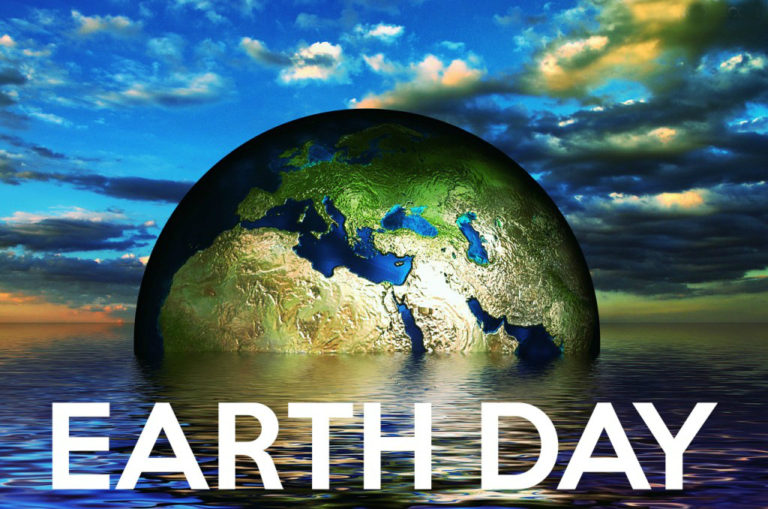This article was originally published in Go Green BK on April 22, 2019. It was authored by Madeline Frew, a junior at Brooklyn Technical High School, majoring in environmental engineering.
* * *
How our daily choices can align with the goals of the Earth Day movement
Founded by former U.S. Senator Gaylord Nelson, Earth Day first began in 1970 in response to growing concerns regarding environmental degradation and the power that he observed from antiwar rallying. On April 22, 1970, Nelson’s national efforts to organize resulted in a demonstration of 20 million Americans! Earth Day activism has continued every year since. Earth Day became a global event in 1990, when former Republican Congressman Denis Hayes spearheaded a massive campaign of 200 million people in 141 countries.

Throughout the decades of Earth Day’s history, it has become clear that millions of people care about protecting the environment. However, it is still all too common to hear rhetoric amongst my high school peers along the lines of “I don’t care about climate change. I’ll be dead anyways.” One’s environmental conscience can easily be drowned by apathy and daily stress. Whether you think that there is no use in trying, because climate change is something seemingly bigger than all of us, or you simply don’t care, there exists channels of good. The most important aspect in decreasing one’s daily footprint is to not fall into complacency. Here are several easy ways for us to live every day like it’s Earth Day.

Food Consumption
One important way to reduce your carbon footprint is by limiting the consumption of animal products, specifically beef. In a study conducted by The University of Michigan, it was reported that 83% of greenhouse gas emissions in the United States comes from food production. Of this, animal products constitute 80% of food consumption emissions. Simply put, in the United States, our consumption of animal products is the driving force of greenhouse gas emissions. While vegetarianism or veganism seem extreme for many, simply cutting beef out of one’s diet every so often will make a substantial difference, given that the pounds of CO2 emissions from one serving of beef is greater than the emissions from the next four animal product combined. A decrease in demand for animal products will eventually result in a decrease in supply and lower greenhouse gas emissions.
 Product Consumption
Product Consumption
Just as choices in food consumption are important, the products that we choose to buy are influential as well. Doing away with single use plastics, like straws, can ease the strain on landfills as well as on marine ecosystems. Plastic straws are not biodegradable and not necessary, especially when products like metal straws are available. Iced coffee and bubble tea fanatics alike can easily make the move away from excessive plastics.



In analyzing our problematic product consumption, another easy place to look is within our lighting fixtures. Chances are if your home primarily uses incandescent lighting, your electricity usage is quite inefficient. According to the U.S. Department of Energy, LED bulbs, “use at least 75% less energy, and last 25 times longer, than incandescent lighting.” While some may be apprehensive to make the switch from incandescents to LEDs, as LED bulbs are noticeably more expensive, their longevity proves worth it.
Buying second-hand clothing is also a great choice to make in order to live a more sustainable life. Given that one cotton t-shirt takes 2,700 liters of water to produce (a 900 day drinking supply), buying a used shirt can make significant impact in water conservation. Additionally, thrifting eliminates the carbon emissions resulting from the production and transport of a new item of clothing. Luckily, Town Square offers their highly popular Greencycle Swaps every season in Williamsburg, Brooklyn. In addition, North Brooklyn has many great thrift stores: Urban Jungle, L Train Vintage, and Beacon’s Closet to name a few.


Composting
Another way to limit your footprint is to participate in GrowNYC’s compost program. Instead of sending pounds of food scraps to the landfill each week, collecting these scraps and taking them to one of GrowNYC’s collection centers can allow for these natural products to decompose and eventually nourish soil. It is easy to collect vegetable peels, egg shells, and coffee grounds, among others. You can store these scraps in a bin or a bag in the freezer if you are concerned about the odor. Then, deliver your food scraps to one of the 100 centers in NYC if you do not have brown compost bins in your community. To find your nearest food scrap drop-off site refer here.


All in all, we are just people trying to do our best in a big world. By making small choices each day in order to protect our environment, this pressing issue will cease to fall into the void of our brains. In Nelson’s words, “The ultimate test of a man’s conscience may be his willingness to sacrifice something today for future generations whose words of thanks will not be heard.” Any step, big or small, is important in recognizing that we have one planet, and we must protect it.

* * *
Check out Go Green BK’s online calendar for fun and inspiring ways to celebrate this year’s Earth Day and every day!



